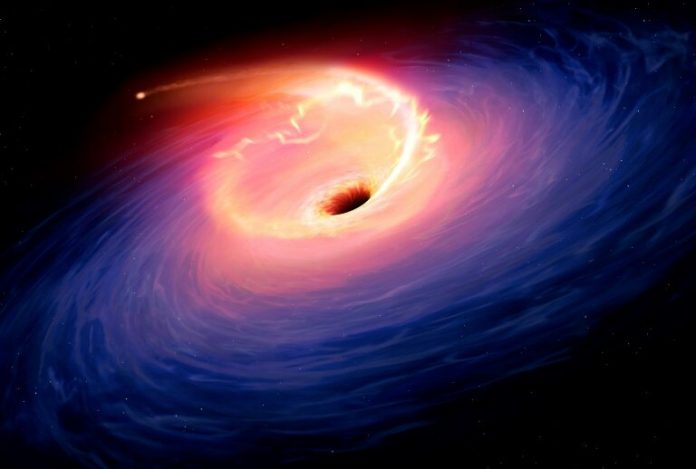Stanford University astronomer Dan Wilkins and his group of researchers saw something no one has seen before. Their telescope was looking at black holes. One of them was 800 million light-years from Earth. And they spotted X-ray light emissions coming out of the backside of the black hole.
“Any light that goes into that black hole doesn’t come out, so we shouldn’t be able to see anything that’s behind the black hole,” Wilkins explains. “The reason we can see that black hole is warping space, bending light, and twisting magnetic fields around itself.”
The telescopes were recording a strange pattern of bright flares of X-rays. And then, the unexpected happened. New smaller flashes of X-rays appeared. And they had different colors than the brighter flares.
Researchers confirm that the same X-ray flares were reflected from the back. This gave them the first-ever views of the far side of a black hole.
“I’ve been building theoretical predictions of how these echoes appear to us for a few years,” said Wilkins. “I’d already seen them in the theory I’ve been developing, so once I saw them in the telescope observations, I could figure out the connection.”
Studying coronas led to another discovery
Researchers studying the corona phenomenon also discovered “luminous echoes,” that appeared as small flashes, the Guardian reported.






